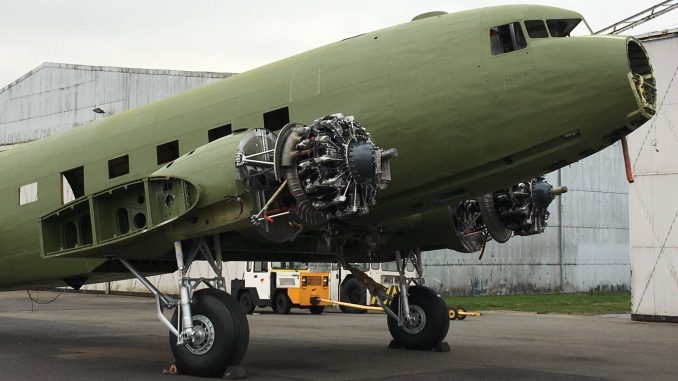
As we move towards the 75th anniversary of the Normandy Invasion next year, there are a number of groups around the world preparing to take part in the Daks Over Normandy commemorative ceremonies which will see several dozen Douglas C-47s/Dakotas re-enacting the paratroop drops over France on June 6th, 2019. One of these organizations is working at fever pitch to thoroughly restore and refurbish Douglas C-47A-65-DL 42-100521 almost from the ground up. Nicknamed Night-Fright, this aircraft is a veteran of the D-Day campaign herself, flying from RAF Membury with the 79th Troop Carrier Squadron of the 436th Troop Carrier Group out of RAF Membury, near Lambourn in Berkshire, England.
RAF and USAAF transports flew in large formations on D-Day, with each having a specific Drop Zone (or a Landing Zone if they were towing gliders). With such a massive invasion, involving literally thousands of aircraft, the Ninth Troop Carrier Command assigned each of their aircraft formations a ‘Serial’ number to make it easier to give orders that everyone would understand. And within each ‘Serial’, each aircraft received a specific ‘Chalk’ number… a number literally written in chalk on the aircraft’s entry  door. This kept things simple, so that each soldier would know which aircraft to board for the flight. On D-Day, Night Fright took part in Serial 10 as Chalk #38. They were taking part in Operation Albany, the 101st Airborne Infantry’s effort to capture five key locations in support of the American amphibious assault due to take place at ‘Utah Beach’ on the Cotentin Peninsular. Night-Fright’s crew consisted of Pilot; William Watson, Co-pilot; James Hardt, Radio Operator; Robert McKnight, Navigator; Arthur E. Thornton and Crew Chief; Owen Voss. They took off for the French coast at 0108 hrs early in the morning of June 6th, 1944 with elements of ‘A’ Battery from the 377th Field Artillery Battalion. They flew in Serial 10’s first vee of three, just off the right wing of Maj. John Kreyssler, the 79th TCS’ CO, in C-47A 43-15358 nicknamed Baby.
door. This kept things simple, so that each soldier would know which aircraft to board for the flight. On D-Day, Night Fright took part in Serial 10 as Chalk #38. They were taking part in Operation Albany, the 101st Airborne Infantry’s effort to capture five key locations in support of the American amphibious assault due to take place at ‘Utah Beach’ on the Cotentin Peninsular. Night-Fright’s crew consisted of Pilot; William Watson, Co-pilot; James Hardt, Radio Operator; Robert McKnight, Navigator; Arthur E. Thornton and Crew Chief; Owen Voss. They took off for the French coast at 0108 hrs early in the morning of June 6th, 1944 with elements of ‘A’ Battery from the 377th Field Artillery Battalion. They flew in Serial 10’s first vee of three, just off the right wing of Maj. John Kreyssler, the 79th TCS’ CO, in C-47A 43-15358 nicknamed Baby.

The mission is described as follows on Night-Fright’s website, “Many of the groups of Pathfinders encountered difficulties in setting up their homing beacons due to enemy troop concentrations, ground conditions, lost or damaged equipment and mis-drops. This meant that when serial #10 encountered heavy anti-aircraft fire and an unexpected cloud bank over the west coast of the Cotentin peninsular, their subsequent drop was widely scattered, as were a number of other such drops on the night. Chalk #38 most likely landed in a group with nine other sticks just to the north of St-Marcouf, some five miles north west of the intended drop zone ‘A’, which should have been set up to the south-west of Saint-Martin-de-Varreville but was actually set up close to Foucarville, a mile north of the intended location. The drop pattern map left shows just how scattered the unit was reported to have been, based on de-briefing reports taken from the Paratroopers upon their return to England, though this has been a contentious issue between the Troop Carrier members and Paratroopers ever since. Another problem came about when the packs that were to be pushed out prior to the troopers exit got wedged into the door frame on a number of aircraft, resulting in the troopers landing far from the DZs or requiring the aircraft to make additional passes and therefore increasing the risk of being hit by ground fire. One trooper witnessed a C-47 making three passes in trying to place its troopers on the correct spot. After a less eventful return flight, the Group’s aircraft all returned to Membury by 0353hrs.”
Night-Fright flew not one, but two missions on D-Day though, as she again took to the skies with many others from the 436th TCG towing gliders as part of Serial 32 in Operation Elmira, part of the re-supply and reinforcement mission for D-Day, and the final 82nd Airborne Infantry flight of the invasion. Night-Fright’s website describes the action as follows, “Mission Elmira was planned for the late evening of the 6th June. Serial 32 of consisted of two CG-4As and forty-eight Horsa gliders towed by the 436th TCG, departing from Membury at 2037hrs (Double British Summer Time) meeting the 363rd Fighter Group’s P-51Bs over St. Alban’s Head and taking a bearing for the route to LZ ‘W’ between St. Mere-Eglise and Carentan. The gliders carried members of the US 82nd Airborne Division’s 319th Glider Field Artillery Battalion, the 307th Airborne Medic Company, ‘A’ Company of the 307th Airborne Engineer Battalion and the 82nd Airborne Division Artillery. Unfortunately many of the gliders were released prematurely and some landed in or close to German-held territory at around 2300hrs as the sun was close to setting. Many of the gliders and C-47s encountered heavy ground fire after having to fly over German-held territory, leading to three aircraft from Serials 32 and 33 being forced to ditch in the Channel on their return.
Fortunately for the 436th all of their aircraft returned to Membury, albeit many having sustained damage, Night Fright herself taking around one hundred hits, putting her out of service for repairs for four days. The Group’s glider pilots were not so lucky, out of the the seven men lost by the Group, the 79th TCS lost 1stLt. John Walls and 2ndLt. Richard Hoag, both due to ground fire, with a number of others injured. Between the 9th and 13th of June the 436th carried out a number of sorties, towing CG-4As for resupply and troop movements to LZs near St-Mere-Eglise.
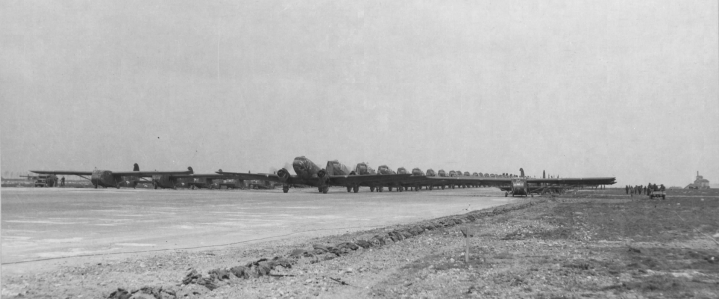
After repairs were completed a few days later Night Fright returned to service to carry out resupply missions, medical evacuations and freight-moving flights during the rest of the month.”
The 436th took part in many further actions during the rest of the war, including Operations Dragoon, Dove, Market-Garden, and Repulse. While it is unclear whether Night-Fright took part in these missions at present, it is likely that she participated in some of them, and the aircraft is known to have flown as Chalk #51 in Operation Varsity, the crossing of the Rhine, on March 24th, 1945. Lt.Watson was at the controls again as they towed two Waco CG-4A gliders (Chalk#101 45-6155 and #102 43-43304) to Landing Zone “S”. It was a hairy mission, with heavy flak, but Night-Fright and her crew made it home safely.
Following the end of hostilities, Night-Fright flew home to the USA. She passed into civilian ownership in 1946, and flew for a number of domestic airlines before she again returned to military service in 1963, this time with the French Navy, who operated her in an aircrew training role until the early 1980s! Basler Flight Services imported her back to the USA and overhauled her for use in the air cargo trade, a role in which she soldiered on until finally retired in 2008. Her future looked pretty dim at this point, as she now belonged to Universal Asset Management, noted mostly for parting out/scrapping airframes. Ironically the company was based at Walnut Ridge in Arkansa, where so many aircraft ended up after the U.S. military put them up for disposal at the end of WWII, Night-Fright being one them. However, this C-47’s association with both D-Day and RAF Membury proved to be her salvation.
Back in the early 1990s, the Walker family acquired the Membury Estate, which encompasses the land and buildings once known as RAF Membury. They based their business here, Walker Logistics Ltd. using a number of the original wartime hangars, plus some new-build structures as well. As time moved on, they became keenly aware of the airfield’s history and decided to do something meaningful in memorializing that. In 2012 they began looking for a C-47 which had served at the airfield during the war, and thus our subject aircraft came into their hands. Initially, it was simply going to be a static restoration, but once the the aircraft’s rich historical provenance emerged, it was clear that they had to do something more. The ideal end goal is to fly the aircraft from Membury, while also establishing a Troop Carrier Museum on the same airfield from which she flew during the war as a testament to all of those who sacrificed so much in WWII to preserve our freedom. This of course will require the refurbishment of Membury’s runway as well, so that will be some time off.
The C-47’s restoration began with Frank and Glenn Moss in Shell Creek, Florida in 2012, where a lot of progress was made. In mid-2017, the Walker family moved the airframe to Coventry in England, where she is currently under care of Ben Cox of Air Atlantique, who has an extraordinary level of experience on C-47s having helped maintain the airline’s fleet of DC-3s, DC-6s etc. over many years.
Charlie Waker related the following about what has happened since the aircraft moved back to the UK as follows…
“Since we moved the aircraft from the US to the UK last year we have mainly been working on thoroughly stripping and cleaning all areas of the aircraft, structural repairs to both the centre section and fuselage where there was corrosion and defects, overhauling the landing gear and brakes, looking for parts etc etc.”
The restoration effort has been relentless, and the team recently celebrated two major milestones with the installation of Night-Fright’s landing gear being completed on December 7th, and her engines on December 12th, so the aircraft is regaining her shape rapidly now. We will be sure to bring more details as we receive them, but people interested in learning more should visit Night-Fright’s Website, Facebook Page, Online Store, Twitterfeed and Instagram page.
Many thanks to Charlie Walker for all of his help in preparing this article. We wish him well with the restoration, and look forwards to more updates in the coming weeks and months!
Richard Mallory Allnutt's aviation passion ignited at the 1974 Farnborough Airshow. Raised in 1970s Britain, he was immersed in WWII aviation lore. Moving to Washington DC, he frequented the Smithsonian’s National Air & Space Museum, meeting aviation legends.
After grad school, Richard worked for Lockheed-Martin but stayed devoted to aviation, volunteering at museums and honing his photography skills. In 2013, he became the founding editor of Warbirds News, now Vintage Aviation News. With around 800 articles written, he focuses on supporting grassroots aviation groups.
Richard values the connections made in the aviation community and is proud to help grow Vintage Aviation News.


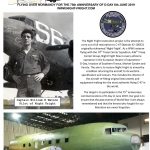
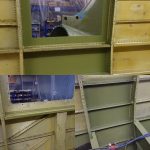
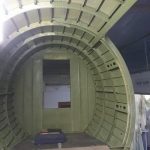
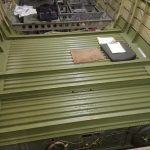
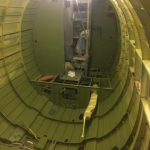
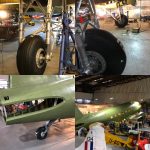
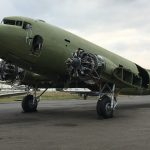
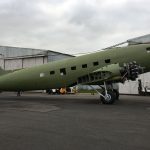
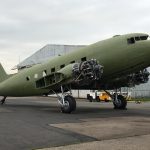
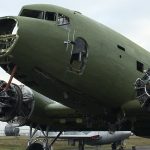
Be the first to comment
Graphic Design, Branding and Aviation Art